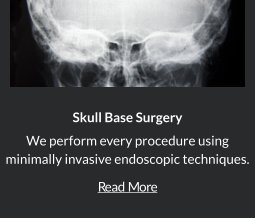The field of spinal surgery has witnessed remarkable advancements in recent years, with minimally invasive techniques taking center stage. Among these innovations, posterior cervical laminectomy stands out as a significant breakthrough, revolutionizing the way we approach cervical spine conditions. This procedure combines the benefits of minimally invasive surgery with the precision required for addressing intricate cervical spine issues.
What Is Posterior Cervical Laminectomy
To comprehend how posterior cervical laminectomy innovates minimally invasive spine surgery, it’s essential to first grasp the basics of the procedure. Posterior cervical laminectomy is a surgical technique primarily used to treat conditions like spinal stenosis, herniated discs, and other cervical spine pathologies. Unlike traditional open surgeries, which involve large incisions and extensive tissue disruption, this procedure takes a more targeted and precise approach.
During a posterior cervical laminectomy, the surgeon accesses the cervical spine through a small incision in the back of the neck. This incision allows for minimal disruption of surrounding muscles and tissues. The lamina, a bony structure that covers the spinal canal, is carefully removed to relieve pressure on the spinal cord and nerves. By addressing the root cause of the issue while minimizing collateral damage, posterior cervical laminectomy represents a significant leap forward in surgical techniques.
Advantages of Minimally Invasive Approaches
Minimally invasive spine surgery techniques have gained popularity for several compelling reasons. They offer a range of benefits compared to traditional open surgeries, including the expertise of a skilled neurosurgeon Newport Beach, who specializes in these advanced procedures.
Reduced Tissue Trauma:
Minimally invasive procedures entail smaller incisions, resulting in less disruption to surrounding muscles and tissues. This translates to less post-operative pain, faster recovery times, and a lower risk of complications.
Quicker Recovery:
With fewer tissues to heal and minimal blood loss, patients undergoing minimally invasive spine surgery generally experience faster recovery times. They often spend less time in the hospital and can return to their regular activities sooner.
Lower Infection Rates:
The smaller incisions in minimally invasive surgery reduce the exposure of the surgical site to external contaminants, lowering the risk of postoperative infections.
Improved Cosmetic Outcome:
Smaller incisions lead to less noticeable scars, which can be a significant concern for many patients.
Preservation of Spinal Stability:
Minimally invasive techniques are designed to target specific problem areas while preserving the stability of the spine as a whole.
Incorporating Precision into Minimally Invasive Surgery
What sets posterior cervical laminectomy apart is its ability to combine the advantages of minimally invasive surgery with the need for precision in treating cervical spine conditions. Here’s how it achieves this balance:
Targeted Approach to the Cervical Spine:
The incision made during a posterior cervical laminectomy is strategically placed to provide direct access to the cervical spine. This precision ensures that the surgeon can focus on the specific area of concern without unnecessary disturbance to surrounding tissues.
Accurate Removal of the Lamina:
The main objective of a laminectomy is to remove the lamina, the bony covering of the spinal canal. In a posterior cervical laminectomy, this step is executed with meticulous care to alleviate pressure on the spinal cord and nerves. The surgeon navigates through the procedure with precision instruments and imaging guidance, ensuring the safety of vital structures.
Customized to Patient Needs:
Minimally invasive techniques, including posterior cervical laminectomy in Orange County, allow for a customized approach to each patient’s unique condition. The surgeon can adapt the procedure based on the specifics of the case, tailoring it to provide the most effective and least invasive solution.
Innovations in Imaging Technology:
Advanced imaging technologies, such as intraoperative fluoroscopy and computer-assisted navigation systems, play a crucial role in enhancing the precision of posterior cervical laminectomy. These tools provide real-time feedback to the surgeon, ensuring accurate placement of instruments and confirming the success of the procedure.
Conclusion: Redefining Cervical Spine Surgery
Posterior cervical laminectomy represents a groundbreaking advancement in the realm of minimally invasive spine surgery. By combining the benefits of less invasive techniques with the precision required to address intricate cervical spine conditions, this procedure is reshaping how we approach and treat a range of spinal pathologies. One notable pioneer in this field is Dr. Robert Louis MD, a renowned neurosurgeon based in Newport Beach. His expertise and utilization of cutting-edge techniques have contributed significantly to the success of these procedures. For inquiries or appointments, please contact Dr. Robert Louis MD at (949) 383-4185.
As technology continues to advance and surgical techniques evolve, it’s likely that we will see even more innovative approaches emerge. With each new development, the future of spinal surgery looks brighter, offering hope and improved outcomes for patients dealing with cervical spine issues.






















